Discover the ultimate guide to batten lights for contemporary interiors. Learn selection tips, installation techniques and how to transform spaces with modern linear lighting.
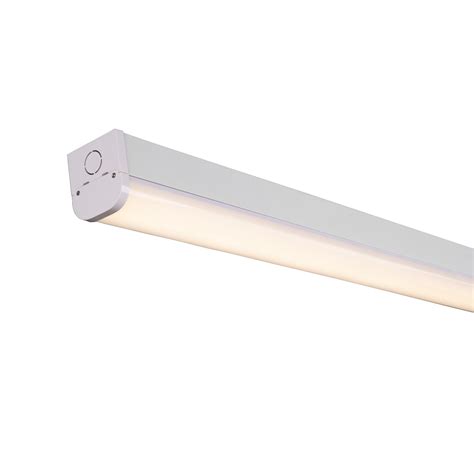
Key Takeaways
Understanding the core principles of batten light selection and application is fundamental for achieving optimal results in contemporary interiors. This section distills the essential knowledge covered throughout the guide, providing a quick reference to the most critical points. Key considerations include recognizing the significant impact linear lighting has on defining spatial perception, ambiance, and functionality. Choosing the right batten light involves evaluating factors like lumen output, color temperature (CCT), and beam angle to match the specific requirements of different zones within a modern space. Correct installation, encompassing secure mounting and appropriate electrical connections, is paramount for both safety and performance. Furthermore, appreciating the design versatility of batten lights – from creating clean lines and highlighting architectural features to enabling layered lighting schemes – unlocks their transformative potential for modern aesthetics. The intrinsic benefits, such as energy efficiency, longevity, and low maintenance, make them a practical and stylish choice.
Here’s a comparison of key batten light features influencing selection:
| Feature | Impact on Selection & Application | Typical Considerations |
|---|---|---|
| Lumen Output | Determines brightness level for the intended space | Task areas vs. ambient lighting needs |
| Color Temp (CCT) | Sets the mood (warm, neutral, cool white) | Matching room function and desired ambiance |
| Beam Angle | Controls light spread and focus | Wide for general illumination, narrow for accent |
| IP Rating | Indicates suitability for damp or outdoor locations | Bathrooms, kitchens, covered outdoor areas |
| Dimming Capability | Offers flexibility in adjusting light intensity | Compatibility with existing dimmer systems |
Armed with these takeaways, the subsequent sections delve deeper into the specifics of selecting, installing, and leveraging batten lights to elevate contemporary interior design.
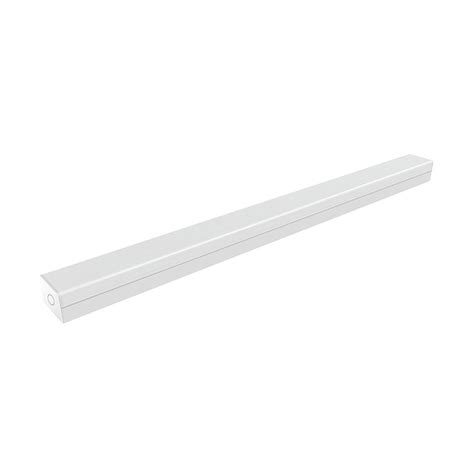
Batten Light Selection Essentials
Selecting the right batten light involves careful consideration of several key factors to ensure optimal performance and aesthetic harmony within a modern space. Firstly, accurately measure the intended installation area; the fixture’s length should complement the space without overwhelming it or appearing undersized. Next, assess the required lumen output to achieve the desired brightness level for the room’s function – task-oriented areas like kitchens demand higher lumens than ambient living zones. Pay close attention to the color temperature, measured in Kelvins (K), as this dramatically influences atmosphere; cooler whites (4000K-5000K) enhance focus, while warmer tones (2700K-3000K) create a relaxing feel. The Color Rendering Index (CRI) is crucial for ensuring colors appear true and vibrant under the light, particularly important in retail or display settings. For environments exposed to moisture or dust, such as bathrooms, utility rooms, or garages, verify the IP (Ingress Protection) rating to guarantee the fixture’s suitability and safety. Finally, consider the finish and profile; options like sleek brushed aluminum, matte black, or pure white should align with the contemporary design scheme and existing fixtures.
Installing Linear Lighting Correctly
Proper installation ensures batten lights deliver both optimal illumination and seamless integration into modern spaces. Begin by verifying ceiling structure compatibility and electrical circuit capacity; always consult local regulations. Surface-mounted options typically require minimal structural modification, while recessed installations demand precise ceiling cavity measurements. For uniform light distribution across longer runs, align multiple fixtures meticulously at the joist level, using laser levels for accuracy. Secure mounting brackets firmly to prevent sagging over time, particularly for extended linear configurations.
Always disconnect power at the main breaker before wiring and engage a certified electrician for complex connections, especially when integrating with smart home systems.
Carefully follow manufacturer wiring diagrams, ensuring correct polarity and adequate cable management within channels. Consider dimmer compatibility during the circuit planning phase if adjustable ambiance is desired. Test all connections before finalizing ceiling finishes. Attention to these details prevents common issues like flickering or uneven light spread, allowing the clean lines of batten lighting to enhance architectural features without visual interruption.
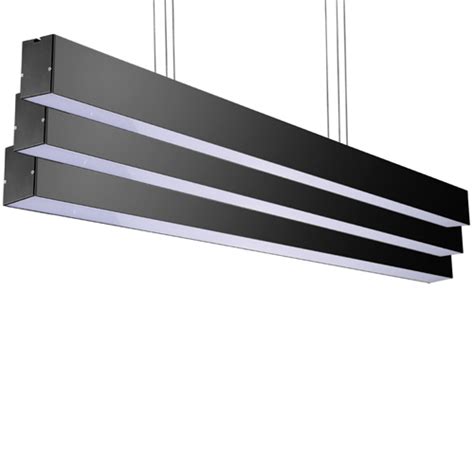
Modern Spaces Transformed by Lighting
Beyond practical illumination, batten lights fundamentally reshape the perception and utility of contemporary environments. Their sleek, linear form seamlessly integrates into modern architectural lines, reinforcing minimalist aesthetics while providing powerful, even light distribution. This capability allows them to dramatically alter spatial dynamics. Low ceilings visually expand under the uniform glow of recessed linear fixtures, creating an airier atmosphere. Conversely, surface-mounted batten lights can define functional zones within open-plan layouts, such as delineating a kitchen island or highlighting a hallway, without disruptive visual barriers. The versatility extends to ambiance; dimmable options transition a bright, energetic workspace into a relaxed evening setting. By eliminating shadows and dark corners effectively, these fixtures enhance the perceived size and cleanliness of a room. Ultimately, the strategic placement and clean design of batten lights become integral tools for architects and homeowners alike, actively sculpting light to enhance both form and function within modern interiors.
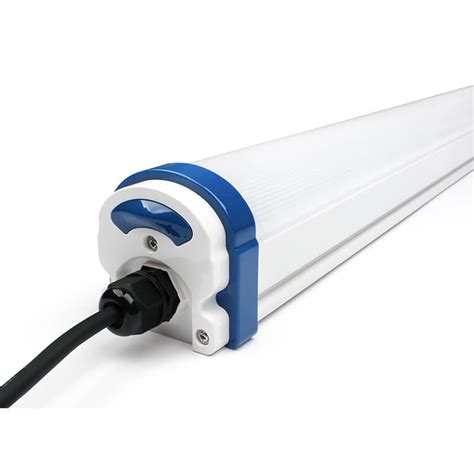
Contemporary Interior Lighting Solutions
Linear batten lights have emerged as a cornerstone solution for contemporary interior design, offering a seamless blend of form and function. Their inherent design philosophy aligns perfectly with modern aesthetics, characterised by clean lines, minimal visual clutter, and an emphasis on subtle sophistication. Unlike traditional fixtures that often dominate a space, batten lights provide uniform, ambient illumination that feels integrated into the architecture itself. This makes them exceptionally versatile, capable of serving as the primary light source in kitchens, hallways, and offices, or as discreet task lighting under cabinets or shelves. Moreover, the availability of various colour temperatures, dimmable options, and finishes allows these fixtures to adapt effortlessly to diverse design schemes, from cool, minimalist environments to warmer, more inviting spaces. Their ability to deliver consistent, shadow-reducing light while maintaining a low profile is fundamental to achieving the uncluttered, luminous feel central to contemporary interiors.
Key Benefits of Batten Lights
Batten lighting offers distinct advantages that make it a compelling choice for contemporary interiors. Primarily, these linear fixtures deliver exceptional, uniform illumination across expansive areas, effectively eliminating shadows and dark spots that can detract from modern design aesthetics. This consistent light distribution enhances visual comfort for tasks and general ambiance. Furthermore, modern batten lights are renowned for their superior energy efficiency, consuming significantly less power than traditional lighting solutions while providing high lumen output. This translates to substantial long-term cost savings on energy bills. Their extended lifespan, often exceeding 50,000 hours, drastically reduces the frequency and cost of replacements. Beyond functionality, batten lights provide remarkable design flexibility; their sleek, low-profile form integrates seamlessly into minimalist ceilings, and they are available in various lengths, color temperatures, and finishes. Options like dimmable drivers and varying IP ratings for moisture resistance further extend their suitability for diverse applications, from kitchens and offices to hallways and retail spaces.
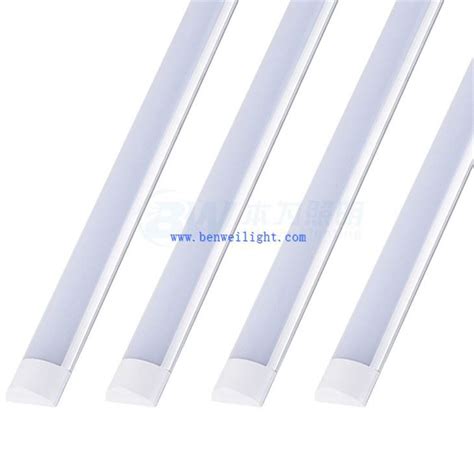
Choosing Batten Lights for Design
Selecting batten lights extends far beyond mere illumination; it is fundamentally an act of design curation. The aesthetic impact of these linear fixtures hinges on deliberate choices concerning finish, profile, and integration. For contemporary interiors seeking a minimalist statement, matte black or crisp white finishes often provide the most versatile backdrop, seamlessly blending with various color palettes and materials. Conversely, brushed brass or polished nickel finishes introduce a layer of sophisticated warmth, ideal for spaces aiming to balance modern lines with tactile richness. The physical dimensions—length, width, and depth—must be carefully considered relative to the room’s scale and ceiling height to avoid visual overwhelm or underwhelm. Placement strategy is equally critical: whether recessed for a flush, architectural feel, surface-mounted for a deliberate industrial edge, or suspended to define zones within open-plan layouts, each method significantly alters the spatial perception. Ultimately, the chosen batten light should act as a cohesive design element, reinforcing the intended atmosphere—be it serene, dynamic, or luxuriously understated—through its form and interaction with the surrounding space.
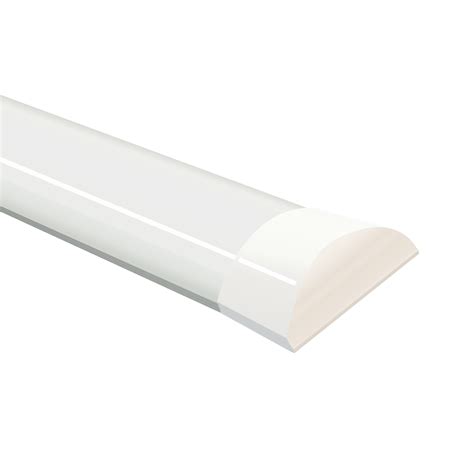
Ultimate Batten Light Buying Guide
Selecting the ideal batten light requires careful consideration beyond simple aesthetics. Key technical specifications form the foundation of a successful purchase. Prioritize lumen output to ensure sufficient illumination for the intended space; task areas demand higher lumens than ambient zones. Closely evaluate the Color Rendering Index (CRI), aiming for a rating of 90+ for spaces where accurate color perception is crucial, such as kitchens or retail environments. Color temperature, measured in Kelvins (K), significantly impacts atmosphere – warmer tones (2700K-3000K) create a cozy feel, while cooler whites (4000K+) offer alertness, ideal for offices or workshops. Dimmability is essential for versatility, allowing adjustment from bright task lighting to softer ambient illumination; verify compatibility with existing dimmer switches. For bathrooms, kitchens, or garages, ensure the fixture carries an appropriate IP (Ingress Protection) rating against moisture and dust. Finally, assess the quality of materials and construction, including the diffuser type (opaque, translucent) for light distribution and glare control, alongside the warranty period offered by the manufacturer.
Conclusion
Ultimately, batten lights represent a cornerstone of sophisticated illumination for modern interiors. Their inherent versatility and clean aesthetic seamlessly integrate with contemporary design philosophies, offering both functional brilliance and sculptural impact. By carefully considering the factors outlined in this guide—from selecting the appropriate specifications and colour temperature to ensuring correct installation—homeowners and designers can fully harness the transformative potential of these linear fixtures. The strategic application of batten lighting elevates spatial perception, enhances architectural features, and crafts distinctive atmospheres, proving that effective illumination is fundamental to achieving truly refined and dynamic living or working environments. Embracing this lighting solution opens doors to creating spaces that are not only well-lit but also intuitively designed for modern living.
FAQs
How do I make batten lights dimmable?
Ensure the LED driver supports dimming and pair it with compatible trailing-edge (ELV) dimmer switches designed for LED loads; check manufacturer specifications before purchase.
What IP rating is suitable for batten lights in bathrooms?
For zones near showers or baths (Zone 1 & 2), select batten lights with a minimum IP65 rating to guarantee protection against direct water jets and moisture ingress.
Can batten lights be used as primary illumination in living rooms?
Yes, especially in modern spaces with high ceilings. For optimal coverage in larger living areas, position multiple linear fixtures strategically or combine with supplementary task lighting.
Do batten lights work with all interior design styles?
While inherently modern, batten lights complement minimalist, industrial, and Scandinavian aesthetics particularly well. Choose finishes like matte black, brushed nickel, or white to align with your decor scheme.
What colour temperature is best for batten lights in homes?
For residential comfort, warm white (2700K-3000K) is generally preferred in living and bedroom areas, while cool white (4000K) suits kitchens and home offices where task focus is key.
How long do LED batten lights typically last?
Quality LED batten fixtures offer lifespans ranging from 25,000 to 50,000 hours, significantly reducing replacement frequency compared to traditional fluorescent battens.





